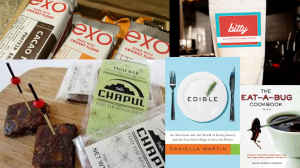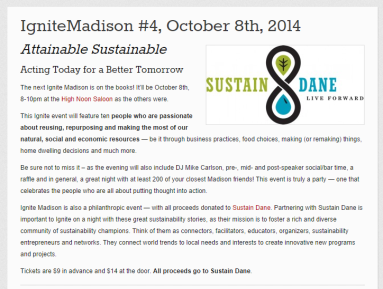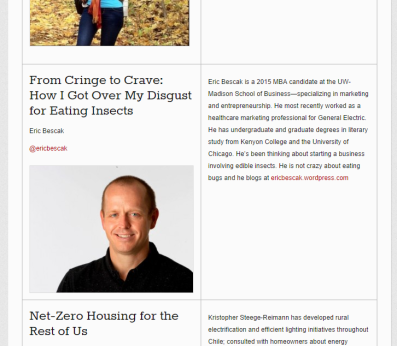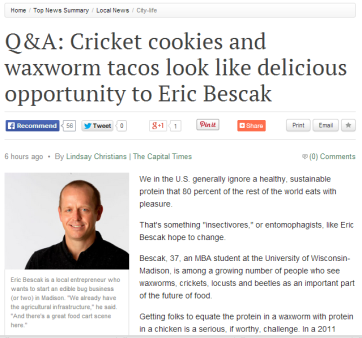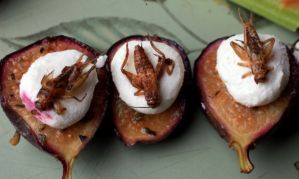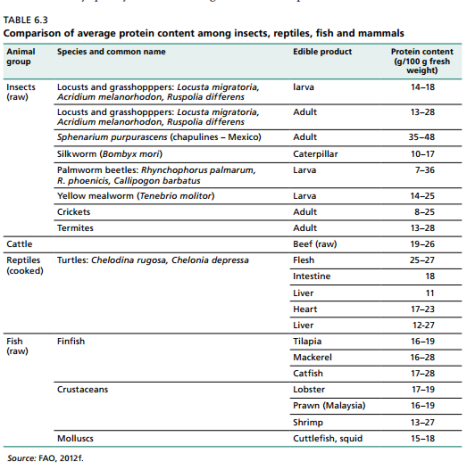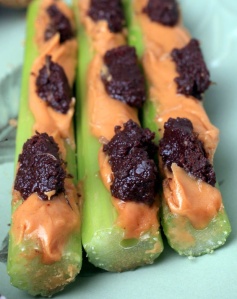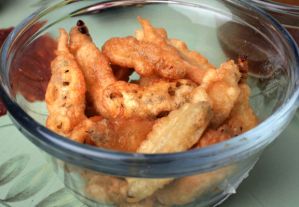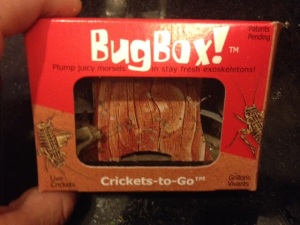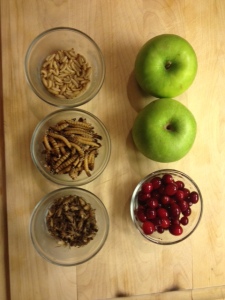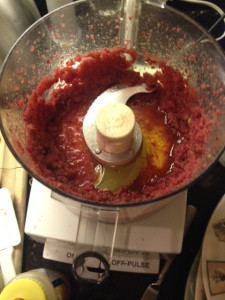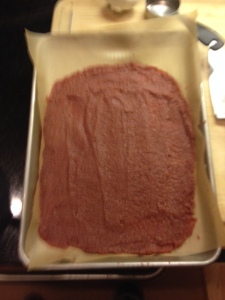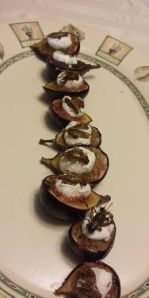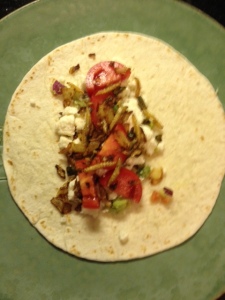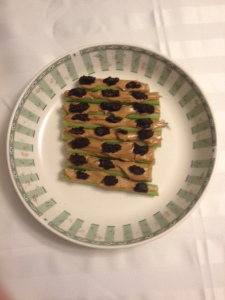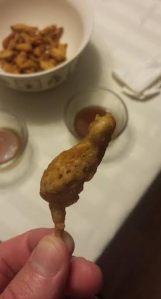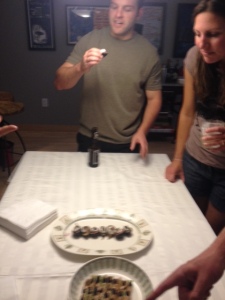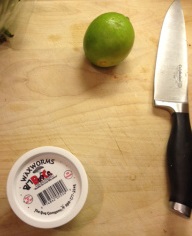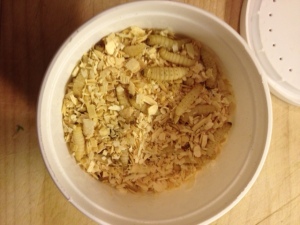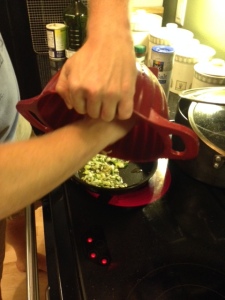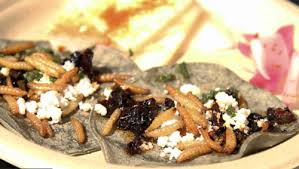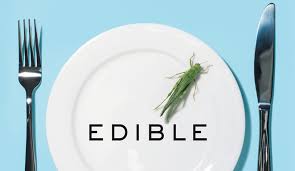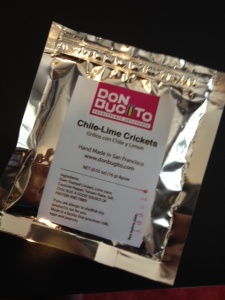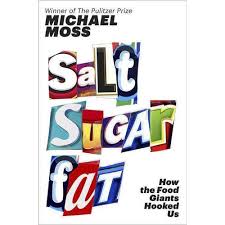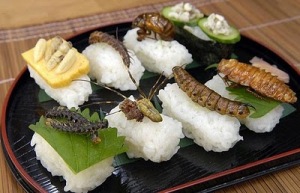Last week, I went up to Montreal to attend the conference, “Eating Innovation: The Art, Culture, Science and Business of Entomophagy,” put together by Alimentary Initiatives‘ Future Food Salon Group, founded by Dr. Aruna Handa Antonella.
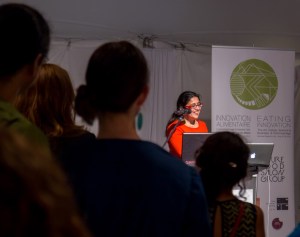
Dr. Aruna Handa Antonella (Photo credit: Jan Keck)
It was an entire conference devoted to edible insects.
I’ve been thinking, reading, and writing a lot about edible insects, especially the business opportunity in the US.
So yeah, for me going to this conference was a little like the end of that Blind Melon video…
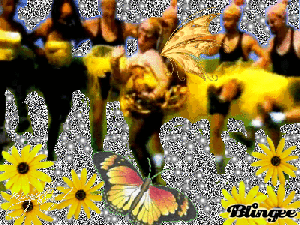
To encounter so many people who have very deep backgrounds in entomophagy–which for the most part is a pretty obscure and cringe-inducing practice in the West–was pretty cool.
Even though we all came from a variety of orientations (entomology, engineering, cultural studies, consumer products), we instantly bonded over our uniquely-shared appreciation for and understanding of entomophagy.
It seemed we were all so used to explaining to others why we should be eating bugs, it took us a day to realize that we didn’t need to this reflexive explaining at the conference. It was an unnecessary, but still comforting, preaching to the converted.
Sometimes, you just want an “Amen.” There were amens all around.
The conference was held in the Montreal Space for Life, which included a huge Botanical Garden, Insectarium, and Biodôme

Montréal Space for Life
It was a fitting and pristine setting. The Montréal Space for Life–having held their own entomophagy programs (cocktail hours, fundraising events)–were great hosts.
There were a cool booths at the conference, including…

Big Cricket Farms (Youngstown, Ohio), who launched their organic-grade mail-order crickets.
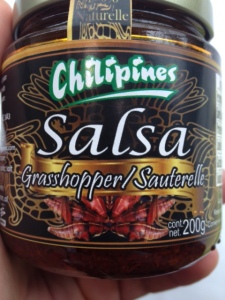
Chilipines (Mexico City) had their Oaxacan-inspired cricket salsas and hot sauces.
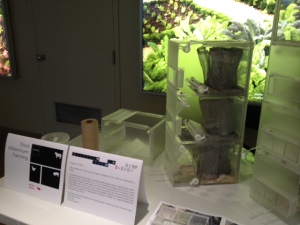
Third Millennium Farming debuted their snazzy cricket farms for home-growers.
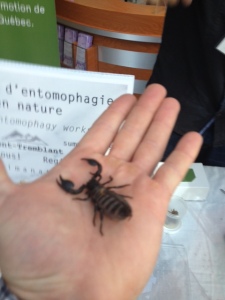
At the animanature booth (an entomophagy education program in Quebec), I was encouraged to hold a scorpion.
The program (which is good reading in of itself) describes the event’s ambitions as the following:
Eating Innovation offers those of us working in this emerging sector, and those of us interested in its development, the opportunity to come together to strategize about how best to fill research gaps, to lay the foundations, both strong and agile, and to establish standards with a view to building a food sector that is at once emerging and yet ancient, regional and yet global: a business opportunity fueled by imagination, hard work and innovation.
It definitely brought us together. But the challenges are pretty daunting as far as building an entire food sector.
I learned a ton. I and a few others tweeted out many compelling quotes and insights, which can be found on Twitter @ericbescak or with #ei2014, between August 26-28. I’ll elaborate on a few of those insights.
- Globally entomophagy is decline. Despite the increasing interest entomophagy is getting in the West, it continues to be seen as a form of primitivism in developing countries. The educated class in those countries tend to dismiss entomophagy as a backwater practice, despite the substantial nutritional and environmental benefits the practice has for those countries most in need. As result, entomophagy is in global decline. Colbert Report guest and the biggest entomophagy celebrity at the conference–David Gracer (founder for SmallStock Food Strategies)–commented on this trend: “That which can help the most is that which we hate the most.”

David Gracer (Photo credit: Jan Keck)
- A lot to consider when building an industrial insect farm. Dr. Robert Kok–a professor in Bioresource Engineering at McGill University–began his engineering research in industrial-scale insect farming as a solution for food and nutrient recycling in long-term space travel. He has developed schematics and processes around industrial-scale insect farming and overviewed 8 interrelated and complex challenges to building an industrial-scale insect farming sector. He’s often called into consult to countries like China and Thailand–where large-scale insect farming is already big (and hush-hush) business. For industrial-scale insect husbandry, there will be factors to consider that usually don’t occur in traditional husbandry. “Your crop will escape,” he assured us. “Have a plan.” He described a comical/nightmarish scenario where a mass of cellulose-starved termites his students were growing, invaded (and ate) a nearby library. To get industrial scale insect farming underway, there will be some awkward events like this to prepare for. And you also have to think about the type of feed. Dennis Oonincx of Wageningen University in the Netherlands (which is ground zero for entomophogy research) reviewed his new research on how feed significantly influences bug nutritional content in unexpected ways. Depending on whether we want many or not as many but high-protein bugs, will influence what you feed them. For the few ento-entrepreurs in the crowd (like me), Dr. Kok had this to say, “I hope you have a lot of stamina. Some of you will make it.” It was a sobering note in an otherwise overly supportive environment.
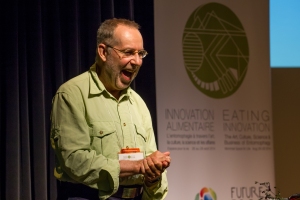
Dr. Robert Kok (Photo credit: Jan Keck)
- Overcoming food neophobias (before they start). Several presentations were devoted to the challenge I’m most interested in: how to encourage enough Americans to consume insects to make a edible insect business sustainable. Dr. Marianne Shockley of the University of Georgia introduced me to the term “food neophobia” to describe the resistance to new foods. (I’m looking forward to trotting out “don’t be such a food neophobic” the next time I try to serve superworm tempura to resistant guests.) Dr. John Wood–professor of Biology & Environmental Studies at The King’s University, Edmonton–spoke to the important appeals we need to make to the imagination of eaters, as well as the importance of using edible insects to express hospitality (and not to elicit shock). He also noted how Oceanspray was able to create an entire market for cranberries–which is now big business in Wisconsin. But where cranberries are just another fruit in an established market, edible insects is an entirely new food category already mired by negative associations. To lower those barriers, insects scan be incorporated in the social role that food plays. Furthermore, the positive associations that insects do have (in children’s literature, for example) can be mobilized to help promote a nurturing image. Dr. Don Sudbrink at Austin Paey State in Tennessee advised simply, “Get them while they’re young.”

Dr. John Wood (Photo credit: Jan Keck)
There was a creative component to the gathering, with artwork and installations supporting a creative atmosphere. The Marjan Verstappen and Han Zhang’s Chrysalis was the centerpiece, suggesting how this gathering might be a gestation for new ideas, from which we’ll burst forth as entomophagy-spreading butterflies…or something like that.
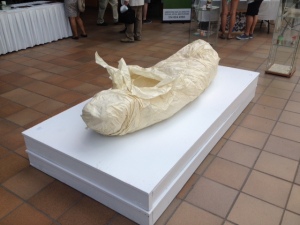
We’ll become beautiful butterflies…
And finally, there was definitely a food component as well. We had crickets and mealworms in a variety of ways…in salsas, salads, empanadas, rice, pesto. They were offered throughout the conference, at a cocktail hour, and as part of a 9-course solar-system-themed dinner. Here’s me compromised in an food pic, again courtesy of the ever-present Jan Keck.
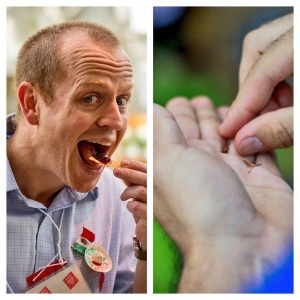
My mouth, hands (Photo credit: Jan Keck)
Many more of Jan’s awesome pics of the food, people, and events at the Eating Innovation conference can be seen on the Alimentary Initiatives gallery.


